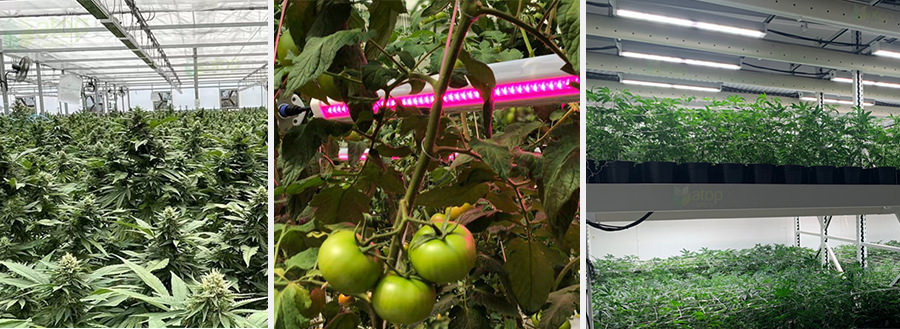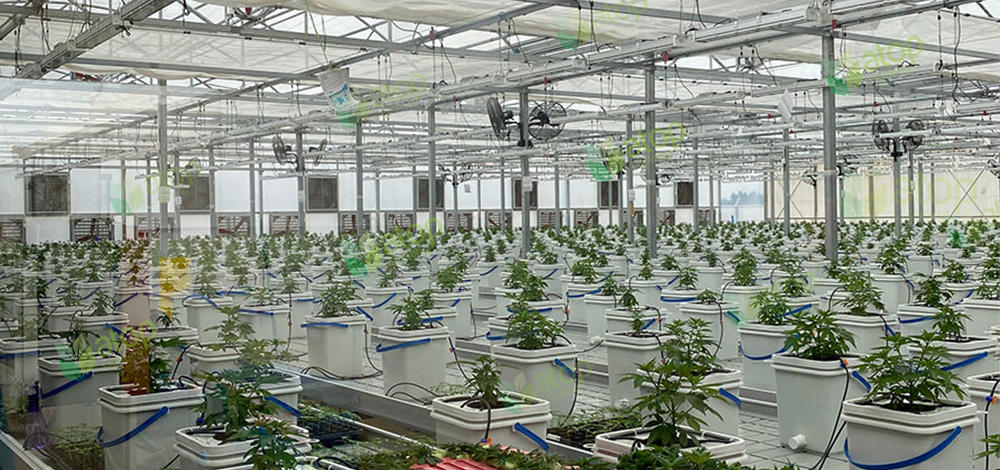The Facts You Need to Know About Commercial LED Grow Lights
As agriculture progresses, the need for effective and eco-friendly techniques has led to the emergence of LED technology. Commercial LED grow lights have become crucial tools for modern farmers who want to enhance crop production due to their impressive energy efficiency, customizable spectral output, and numerous advantages.
In this article, we will share important information about commercial LED grow lights. Whether you're a commercial grower looking to boost yields, a researcher investigating new cultivation methods, or an indoor gardening enthusiast, this guide will provide you with the knowledge required to make informed decisions and achieve optimal results.
What are commercial LED grow lights
Commercial LED grow lights are advanced lighting systems created for horticultural applications. They use Light Emitting Diode (LED) technology to provide a tailored and efficient light source for indoor farming, greenhouse cultivation, and other controlled growing environments.
Commercial LED grow lights are not only beneficial for plants but also for business. They feature exceptional energy efficiency, customizable spectral output, and long lifespan. By using LED grow lights, growers can increase yields, improve product quality, and lower operational costs. Additionally, growers can gain a competitive edge in the market.
Types of commercial LED grow lights
Commercial LED grow lights come in various types, each designed to cater to different horticultural needs based on the spectrum they produce, their design, and other features.
According to the spectrum they produce, here are some common types of commercial LED grow lights:
- Red and blue LED grow lights: These light emit blue light to stimulate vegetative growth and red light promotes flowering and fruiting.
- Full spectrum LED grow lights: Full spectrum LED grow lights are designed to mimic the natural sunlight, providing a balanced and complete spectrum for all stages of plant growth.
- Supplement LED grow lights: Supplement LED grow lights can provide additional light in specific wavelengths like green light, UV, and far-red light. They supplement existing lighting conditions and optimize plant responses.
Commercial LED grow lights can also be categorized based on their installation methods:
Top lighting: These grow lights are installed on the top of plants and are commonly used in greenhouses. They imitate natural sunlight by providing illumination from the ceiling level.
Inter-lighting: Interlighting is taken as the supplemental lighting for plants, especially for vine crops like cucumbers and tomatoes. These lights are placed alongside or between the plants and leaves. Compared to top lighting, interlighting is more effective in reducing leaf shadow.
Vertical farming: Lighting fixtures are installed on racks above the plants. The distance between the lighting and plants is shorter than top lighting but longer than interlighting. Grow lights are positioned closely above the plants in vertical farming setups.

How to choose the right commercial LED grow lights
With the vast array of commercial LED grow lights available, choosing the right commercial LED grow lights can be overwhelming. But selecting the right lights is crucial for achieving optimal yields. Here is a simplified guide to help you navigate the selection process:
1. Assess your grow space
Measure your grow space to determine the coverage area required. Consider the arrangement of your plants and the need for uniform light distribution.
2. Understand your plant’s needs
Take into account the types of crops you want to grow and their growth stage. Different plants thrive under different light intensities and spectral compositions. Research the optimal PAR (Photosynthetic Active Radiation) and specific wavelengths required for your crops. Keep in mind that lighting requirements change as plants progress through their life cycle, so look for lights with adjustable spectrum or intensity to accommodate these changes.
3. Evaluate light specifications
Consider the wattage, PPFD(Photosynthetic Photon Flux Density), and spectrum of LED grow lights. Higher wattage indicates more power and light output, but make sure it aligns with your plants’ requirements and avoids exceeding recommended levels. Select lights with a spectrum tailored to your crop needs.
4. Consider additional features
Some lights offer additional functions such as dimming, timer, and smart technology. Dimming capabilities allow for adjusting light intensity based on plant needs and growth stage. The timer enables precise control and convenience. Smart technology enables remote monitoring and automated control of lighting parameters.
5. Research and compare
Read reviews, compare specifications, and consult with experienced growers and lighting experts. Many manufacturers offer free consultations to help you choose the optimal solution for your specific needs.

Installation and maintenance
Ensuring the optimal performance and longevity of commercial LED grow lights starts with proper installation and consistent maintenance. Here are some tips to help you maximize efficiency, extend the lifespan of your lights, and ultimately achieve healthier plants and a higher return on your investment.
Installation:
- Read manufacturer instructions carefully: Take the time to thoroughly familiarize yourself with the manufacturer’s guidelines and installation instructions specific to your LED grow lights. Following these instructions carefully is crucial for proper installation and avoiding any potential safety hazards.
- Ensure proper spacing: Position the LED grow lights at the appropriate height to achieve uniform light distribution across the canopy. Consider the recommended hanging distance provided by the manufacturer to avoid excessive light intensity or shadowing, which is negatively affects plant growth.
- Electrical safety: Safely connect the LED grow lights to the power source by following electrical codes and safety standards. Use appropriate wiring and connectors to ensure a secure and reliable connection.
Maintenance:
- Regular cleaning: Clean the LED grow lights regularly to remove dust, dirt, and any debris that may accumulate on the surface. This will help maintain optimal light output and prevent any potential interference with the diodes.
- Check for damage or wear: Periodically inspect the light for any signs of damage, such as cracked lenses or loose connections. Replace any damaged components promptly to avoid potential performance issues.
- Monitor light output: Keep track of the light output over time. LED grow lights gradually degrade over their lifespan, resulting in reduced intensity. If necessary, replace older lights to maintain consistent and effective light levels for optimal plant growth.
From this blog, you learn the concept, types, and selection process for commercial LED grow lights, as well as valuable tips for ensuring their long lifespan and high efficiency. If you need any assistance with commercial LED grow lights? Make sure to contact us. Our team of lighting experts is ready to provide prompt assistance and support.

